Jamie Jean Schneider DommDigital Strategist for the North American Division If you feel that you have a solid grasp of what modern communication tools and technologies are, you may want to skip down to the second part of this section. However, we felt it appropriate to include a general description to ensure a common understanding among a diverse audience. For the purposes of digital discipleship and evangelism, let’s define digital tools and technologies as: devices, web-based platforms, applications, and software that process and use information (videos, text, images etc. in numerical form known as binary code) to communicate or connect with other devices and software through the internet or with cellular data. More simply put, these are devices and web-based tools that enable individuals to share ideas, communicate to a global audience, and connect with people anywhere almost instantaneously. These tools encompass a wide variety of technologies that many people interact with daily and include, but are not limited to:
Connecting with the Local Community Digital tools have become an integral part of the fabric of modern living, but as a Church, we have yet to fully tap into their potential for sharing the gospel and directly serving our communities. As discussed previously, people spend significantly more time socializing online than they do in person. Social media and other digital communication tools allow us to not only go global, but effectively reach and permeate our local communities with positive messages and mission projects. When we think of missionaries, we usually think of traveling to far away lands and learning new languages in order to communicate. However, what is becoming ever clearer for the Church in North America is that our biggest challenge is reaching our local neighbors in an increasingly post-modern, secular society. The mission field is right next door, and it’s just as legitimate. Digital technologies have made it easier than ever to:
The most meaningful expression of our mission of hope and wholeness is in the context of the local church. The potential of digital evangelism and discipleship must be realized at the individual church level. A top-down approach cannot meet the needs of your neighbors, but you and your congregation can. The Adventist Church began as a grassroots movement, and we can re-embrace this mentality to reach the modern seeker next door. With over 1.2 million Adventists in the North American Division and over 5,500 churches, there is a lot of untapped potential.
The true power of the local church is in its unique ability to create and sustain meaningful relationships with people. Social media and other digital technologies are merely tools that can be used to scale up these efforts beyond who we physically meet. They can also assist us in being more targeted and relevant in our approach to evangelism, by revealing the felt needs and demonstrated behaviors of our community. I believe that the next great awakening in North America will be a digital one, but we must work intentionally where we are, in order to more effectively reach people where they are in their spiritual journey. In the following sections we’ll expound upon this principle, mapping out practical ways to leverage digital discipleship and evangelism.
1 Comment
Jamie Jean Schneider DommDigital Strategist for the North American Division Good communication is when you communicate in a way your audience understands. You may feel like you know how to use social media platforms for personal sharing, but writing to achieve a marketing/evangelism goal requires much more thought and strategic planning. This section is designed to give you a framework for successfully defining your target audience and determining how to speak to them in a way that is relevant, encouraging meaningful engagements. It is essential that we not only communicate clearly, but that we also take the time to deeply understand our audience. It doesn’t matter if you know what you mean. Put yourself in your audience’s shoes and speak to them accordingly. Speak to your audience in a way and with the words that enable them to understand and connect with your message. REMEMBER, EMPATHY FIRST. This means that when we communicate in the digital space, we must speak the language of the platform and recognize the “cultural expectations” and “norms” prevalent in the space, as well as within the culture(s) of the people we are communicating to. Without careful research, our words and intentions can easily be taken the wrong way, inadvertently offending and pushing away the very people we are trying to reach. As Christians, we want to reach and include everyone. This is our ultimate goal as disciples. However, from a specific ministry standpoint, this approach ends up reducing the relevancy of the message and spreads efforts too thin for significant impact. Afterall, a standard marketing rule of thumb states: If you try to reach everyone all the time, you’ll end up Each person, ministry, and local church is uniquely equipped and positioned to reach different types of people. Therefore, it is vital to understand who your audience is before you create content, write a single social media post, or spend any money on social advertisements. This section will help you learn how to effectively shape your messages and content to match your audience’s needs and reach them effectively, no matter their age, gender, ethnicity, location, or situation. Determine Your Target Audience The first step in reaching your audience is to develop a clear picture of who you are talking to. Begin with surface-level demographic information. Use the criteria below and fill in the information for your ministry’s target audience. Surface-Level Demographic Information:
Once you’ve determined the surface-level characteristics of your target audience, work down to a deeper level which will help shape your messaging and the kind of content you’ll create. Create deep connections by identifying with People no longer fit into neat categories, so we must connect with them on a more profound level, transcending the standard marketing demographics of age, ethnicity, gender, language, location, and interests. If you can dig deeper, your audience will be loyal to your brand because you resonate with them at their core. The best way to do that is to investigate their needs, experiences, values, and perceptions. Conducting surveys and interviews is one key way to collect more information. Then start asking yourself questions that will help you to get inside the minds of your audience members. What motivates their actions? What makes them who they are? What do they have in common? How can I speak and write in a way that my audience will find relatable? What do they value? What do they actually need? Examples of needs may include: a spiritually supportive community, affordable education, employment, affordable medical care, safe spaces for their children, mentorship opportunities, a better future, healthier relationships, self-improvement, Christian guidance on real-life issues, food security, or practical life-skills training. Use the criteria below and write down possible answers for your target audience. Deep Level Characteristics:
”Cultural Empathy” in the Digital Mission FieldAs discussed in the previous section, the concept of “cultural empathy” is well known in the physical mission field and its principles should be applied to the digital mission field. We live in a world of intersecting cultures or communities, and, therefore, our definition of culture must expand. Many now find themselves between cultures and functioning in multiple communities simultaneously. In order to identify the unifying threads between seemingly dissimilar people, we need to first unpack their many cultural influences. These cultures are potentially endless in variety, but can include:
Now take the time to consider the potential overlap in cultures found within your church, community, ministry, or target audience. How might they influence behavior and needs? What unifying factors can you identify? Internal v. External Are you speaking to Adventists or non-Adventists? Your language may change based on the answer to this question. We must modify the way we communicate in order to effectively reach different audiences without creating barriers. For example, when we are talking to our friends we use certain vernacular that tends to be more playful and friendlier, but when we are talking to our boss or elders, our persona is more serious and professional. The same is true with evangelism and discipleship. We may commonly use certain words such as “Sabbath” or “haystacks” that could seem foreign or confusing to non-Adventists. The list below offers some guidelines on how to distinguish between internal and external audiences. Internal:
Audience Personas 101 When communicating to your audiences, visualize actual people—their interests, culture, wants, needs, and expectations—to refine your voice. You will probably need to create unique personas to represent different target groups within your audience. According to The Guardian, personas can be simply defined as: A fictional character that communicates the primary characteristics of a group or segment of your audience and takes into consideration needs, demographics, motivations, and environments. Determining your audience personas can help you develop and write content that will be relevant and useful to your audience. The best personas are often created by simply talking to your audience, but social media insights, website analytics, and surveys can also prove very useful. Personas give a human face to a collection of information, and they allow you to classify groups for different messaging campaigns and programs. The best personas combine both quantitative and qualitative information. Below is an example of a persona:  About Bryce: Adventist College Persona Age: 17 Education: High school senior Interests: Business, sports, camping, meeting other young people, discipleship training Salary: $3,000 a year Location: Berkeley, Calif. Family: Adopted, married parents, no siblings, Hispanic Goals: Finding a good paying and meaningful job, mentoring younger peers, finding a girlfriend, finding a Christian friend group Challenges: Finding friends with similar morals, avoiding drugs/alcohol, food insecure, feels rejected by his biological parents and struggles to connect, struggles with religious doubt Values: Fair justice system, the environment, good reputation, strong character, fairness, good citizenship, technology and flexibility, diversity, leadership training and experience Fears: The unknown, poor work-life balance, affording college, student loan debt, getting a good job, rejection, finding purpose/meaning Preferred platforms for Media: Snapchat, Instagram, YouTube Messages applicable to Bryce: We are all adopted into God’s family. Our church/school/ministry is a place to belong and a place to grow. Connection to others, connection to God. Diversity and purpose. Mentorship opportunities and support for leadership training or education. Social media personas are developed based on your target audience as defined earlier in this section. The key is finding out what those people want and need; the rest is simply compiling those qualities into a made-up person. As a Church, we need to constantly find ways to reach our audience for the kingdom in the best, most efficient way possible. Creating social media personas is a valuable exercise that enables us, as communicators, to step into others’ shoes and view life from their perspective. Personas help us develop empathy with our audience. Use the following framework to develop your own personas:
Special Note about Generation ZThe Church and the wider Christian community has become increasingly concerned with reaching Generation Z, people born approximately 1997-2012 (Pew Research Center). However, the Church has not yet adapted to meet the needs of the generation before them, Millennials. We should be concerned, as these two age groups represent the largest divergence from traditional Christian values and lowest participation in faith institutions we’ve seen. To reach and retain these generations, we must reframe our approach based on their perspectives. Generation Z lives in a totally different world and interacts in a totally different way than any generation before them. When asked what the most important historical event in the USA in the last 20 years was, they responded, “The release of the iPhone.” Most older people would say the terrorist attacks of 9/11. (Adam Fenner, Director, Adventist Learning Community) From Gen Z and Millenial perspectives, their answer makes sense given that technology and digital communications have completely reshaped society, how we connect with each other, how we shop, and how we live. They have grown up in an almost entirely digital world, and they relate to technology in a more integrated fashion than any other generation before them. So who is Gen Z? What you should consider when targeting this age group:
What do Gen Z’s values mean for the Church? It means we must innovate for meaningful impact. If we don’t, we only have ourselves to blame for the continuous departures. Change is hard, and the Church is notoriously slow to adapt. Now is the time to act if we really are concerned for the salvation of the next generations. Institutions are not permanent. After all, in the words of W. Edwards Deming, “It is not necessary to change. Survival is not mandatory.” The good news is that God never fails. He will always have a people, and He has called us to participate in His great work. In Summary: We must put our assumptions and judgements in the trash. Too often we create programs and content based on our own interests and passions or based on what we think people need, according to our own perspective and bias. Use the audience factors discussed in this section to make data-informed decisions about your audience, then create programs, messaging, and content based on what you discover. We’ll go into content creation in further detail later in the “Content Creators/Creatives” section of this guide. If you’re still not sure where to start, spend more time with your target audience and ask more questions. Find out directly from them what they need, what they feel will improve their lives, and what will inspire them to develop a closer relationship with God.
To reach people, we must become a student of their culture. No judgement, only acceptance and adaptation. No one should know more about your audience than you do. Strive to become an expert on the people you are trying to reach. Jamie Jean Schneider DommDigital Strategist for the North American Division Traditional marketing and evangelism takes a linear approach, starting with attracting “leads” and eventually aiming to convert people into members. While this strategy worked for a long time, the world has changed dramatically in the past few decades. It no longer makes sense, nor is it effective, to group people together into one-size fits all categories and then take a cookie-cutter approach to encouraging spiritual conversion. In addition, the assumptions we make about people groups can often be misleading or even harmful. Therefore, we must fundamentally change the way we approach evangelism. Understanding Modern AudiencesYour average person is just as likely to have moved several times, as to have continuously lived in the community they were born, surrounded by a homogeneous collective of people who share the same culture and life experiences. The "simple life" has given way to something more complicated, and, perhaps, messy. But even for those who have never changed their geographical location, people are now globally connected through social media in ways that were unheard of just 20 years ago. What this means is that we now live in a world of intersecting cultures or communities. These cultures are potentially endless in variety, but we’ll unpack a few in the next section on target audiences. The concept of cultural empathy is well known in the physical mission field. Evangelism experts know that the best way to reach a community or people group is to empower a member of that community to evangelize to their own. Or at the very least, speak the language of the people and show sensitivity and respect to their cultural paradigms. Non-native members of a culture group must sincerely seek to understand the community and reach them where they are in a way that is relevant. We have forgotten this principle when it comes to online evangelism and online communities. While digital evangelism or discipleship is a new concept for the Church, we can remember and apply tried and true bits of wisdom previously uncovered by experienced evangelists and geographically focused missionaries. Digital tools are a way to magnify the reach and impact of traditional and friendship evangelism, not necessarily replacing it. Digital platforms allow us to scale up our efforts in a low-cost way. The apostle Paul admonishes us to “become all things to all men, that I may by all means save some” (1 Corinthians 9:19-23 NASB 1977). To accomplish this in modern society, our definition of culture needs to be expanded. Many now find themselves between cultures and functioning in multiple online and offline communities simultaneously. The old marketing strategies of putting people in target groups based on a few identifying factors is no longer reflective of reality. People no longer fit into neat categories based on surface-level descriptors such as location, race, gender, language, and interests. We must connect with audiences on a deeper level based on unifying needs and core values that transcend standard marketing categorizations. Digital tools can enable us to understand the drivers behind the actions, beliefs, concerns, needs, and values of larger groups, better positioning us to serve them in a relevant way. If we can do this, our audiences will be loyal to our Church brand, because we resonate with them at the core of their worldview. We’ll unpack how to better reach, understand, and effectively communicate with target audiences in the next few sections of this guide. To reach younger generations, we must take an integrated and holistic approach that considers the complexities of modern life and relationships. The components of the traditional model are not dead. Many of these steps are still in play; we just have more resources to reach and interact with people in ways that are relevant to their unique situation. Digital communications is a means to amplify our messages and spiritually feed people seven days a week. In other words, the linear model has given way to a multi-faceted process that can start and stop at various points, with many key entry and engagement points. When we take a holistic approach to understanding our audiences better and use this knowledge strategically to combine traditional with digital strategies, we can fish 24/7 in a much larger pond. The kingdom of God is an all-day, every-day pursuit. His church should be the same online as offline. After all, church is not a program to watch, but a people to be. Success should not be measured by counting people in a building, but, rather, by whether or not we’re building a kingdom. Digital Evangelism Modified Funnel Another marketing concept we can use to understand the modern process of evangelism is a funnel, where every person is channeled toward the goal which traditionally has been “become a member.” While people can enter and engage at different levels of the funnel in multiple ways, movement toward (and beyond) this goal is the basic principle of the funnel model. Every single transition involves an ask, either implied or explicit. With every reduction in the funnel size, there is an implied exit of people. Every person has the option of moving forward down the chain, living at a stage for a period of time, or deciding to leave the process altogether. We must give easy calls-to-action and lead participants in a way that makes moving to the next step a no-brainer. Eventually the goal is for members to become active disciples who then become part of the funnel mechanism as content creators, distributors, or engagers as talked about in section 3. This is why this modified funnel fans back out at the base and loops back around. The foundation of this marketing paradigm is built on continuous discipleship and integrated strategies, utilizing a wide range of evangelistic strategies. The Modern Seeker’s Journey To help us better understand how the modern world of analog and digital experiences interact to move someone through their spiritual journey, we can consider a systems-thinking tool called journey loops. “Systems thinking is a holistic approach to analysis that focuses on the way that a system’s constituent parts interrelate and how systems work over time and within the context of larger systems. The systems thinking approach contrasts with traditional analysis, which studies systems by breaking them down into their separate elements… According to systems thinking, system behavior results from the effects of reinforcing and balancing processes” (Margaret Rouse, Techtarget.com). A system is a group of distinct elements that are interrelated and organized to achieve a common purpose or goal. These steps or loops do not necessarily go in order. A seeker can start at any point, skip sections, leap from loop to loop, and even backtrack. Each loop and experience feeds back into the other steps in the process to help reinforce the journey. I personally started in the “Think” (Consideration) loop, then the “Care” (Relationship/Service) loop and then visited a local church as part of the “Do” (Visit/Engage) loop. This causal loop system is not a perfect representation of the process, but it helps visualize what is actually happening in a complex system or, in this case, journey. In today’s world where people are turning to the internet for answers, the first two parts of the journey are primarily spent in the digital space. Based on the person’s situation, they may or may not transition to an in-person experience, though that is always the one of the goals of this process. However, it’s important to recognize that experiences in the “Care” and “Stay” loops are just as relevant in the digital space. Therefore, we must seek to find ways to extend the Church experience online, because the in-person experience may not always be possible, at least in the short-term. How the Modern Seeker’s Journey fits into the Digital Discipleship and Evangelism Model Reflecting back on the Digital Discipleship and Evangelism model, we can see how the three roles or types of digital evangelists can work together to help guide a seeker through a journey of spiritual growth.
Distributors help push out content and messages to help initiate the “See” (Awareness) step and can also function within the “Ministry and Discipleship” loop, using digital tools and technologies to share content within their sphere of digital influence, which, in turn, contributes greatly to the “Research and Discovery” stage. The role of content creators is to package the gospel message and teachings of Jesus into various digital-friendly formats, such as: video, blogs, images, podcasts, etc. The resulting content is vital to the growth and decision-making of a seeker within the “Research and Discovery” loop. This content, combined with the role of engagers, can serve as a catalyst to move a seeker to the “Do” (Visit/Engage) and “Stay” (Become a Member) steps. Engagers are empathic individuals within an organization, or operating independently, who engage in online conversations for the purpose of building meaningful relationships, better understanding needs, and determining meaningful ways to serve others in the community. The engager role spans across multiple touchpoints in the modern seeker’s journey and plays a vital role in moving a person towards taking an action and, ultimately, to a faith-based commitment. Social media provides a unique opportunity for long-term member care that can enhance and strengthen the relationships your ministry cultivates with members and the community. We know that connection and relationships is what builds a strong faith community and keeps people in the Church. To that end, engagers are vital to the “Loyalty and Personal Connections” loop as well as the “Do” (Visit/Engage) step and even an integral part of securing a seeker’s long-term desire to “Stay” (Become a Member) of a faith community. Every opportunity to connect is an opportunity to advance the kingdom of God. Our digital voice may be the only opportunity a seeker has to see Christ’s love demonstrated in their life. We as a Church should strive to create connections and take a comprehensive approach to facilitating the seeker experience, treating people online as if we’re talking with them face-to-face. Their online interactions with you should make them want to experience your faith/mission in person. Then, when they to come for that onsite experience, it should be a continuation of the positive relationship that has been built with them online. There should not be a disconnect between how a person is nurtured in the pews and how they are treated online, or vice-versa. Jamie Jean Schneider DommDigital Strategist for the North American Division I am often asked if digital communications can really make a global impact when only around 42% (as of June 2019) of the world’s population is on social media. This question always reminds me of one of my first campaigns for the Church. In the summer of 2016, I worked with “Your Best Pathway to Health” to help create community awareness for the free mega-health clinic that was coming to Beckley, WV, the heart of Appalachia. A quick search in Facebook Ads manager revealed that around 200K people within 50 miles of the convention center where the clinic would take place, were on Facebook. With a small budget of $200, I started a community awareness ad campaign targeted at those living within driving distance of Beckley. This digital effort was part of a larger multi-channel campaign that included newspaper ads, 30K+ hand-out flyers, and other traditional media. Can We Really Reach Those People?It is said that “familiarity breeds contempt” or, at least, presumptuous behavior. Soon after launching the campaign, I received a call from a long-time friend who felt very strongly that I was out of line to use Church funds for this digital campaign, and that I was out of touch with the realities of this community. After all, “this was Appalachia, and those people don’t even have running water and electricity.” After two hours of conversation, I still call her friend, because this was a teaching and learning moment. I had an opportunity to share the potential this technology offers for our mission, as well as gain a better understanding of the cultural paradigm I was up against (in terms of encouraging the Church to embrace digital strategies and the perceptions that may result). What she didn’t know was that I made a decision based on data and not assumptions about the “least of these.” In fact, she didn’t know that I had been raised in the same economic class she felt I was so disconnected from. I asked her one simple question: do you know someone who is not on social media? She said yes. I followed up with something like, “If you saw an online advertisement about free medical treatment with no strings attached, and you knew they needed help, would you tell them?” Without hesitation, she responded, “Of course!” One question and response summarized my strategy. What I had done was make a strategic decision to activate the sharing power of the 200K people who were online and, most likely, connected to others in the community who were not on social media. It’s human nature to share a good thing when we see it, especially with those we care about who need the services offered. According to an extensive study conducted by the New York Times, 94% of people share content online because “they feel the content will improve the lives” of others. This act of sharing goes beyond the digital space. “Then, leaving her water jar, the woman went back to the town and said to the people, ‘Come, see a man who told me everything I ever did. Could this be the Messiah?’ They came out of the town and made their way toward him” (John 4:28-30, New International Version). However, my ten years of digital marketing experience was entirely secular. I had never done an advertising campaign for a church project before, and consequently prayed a lot in the weeks leading up to the clinic. When the event began I was overjoyed at the testimonies of people who said their family member, friend, or neighbor saw an ad online and told them to come. According to the exit surveys, social media outperformed all the traditional advertising, and was second only to referral by friend or family member. Based on the anecdotal testimonies, word-of-mouth (friend/family) was also largely driven by the social media campaign. Click here to learn more about this case study in community awareness. Social media is the modern School of Tyrannus, a place where the ancient Ephesians gathered to engage with new ideas, pass the time, share thoughts, and participate in discussions. Paul spoke at the School of Tyrannus in Greece for two years (Acts 19:8-9), essentially getting the gospel to go viral in his day. (A podcast about Paul’s influence at the School of Tyrannus by Dee Casper, Brand Evangelist, ARTV, can be found HERE). “This took place for two years, so that all who lived in Asia heard the word of the Lord, both Jews and Greeks” (Acts 19:10, New American Standard Bible) Paul stayed in one place, and yet his teachings spread. How did this happen?Ephesus was an important port for trade and commerce (like the internet), attracting people from all over the Roman Empire. People would come and hear what he had to say, go home, and tell others what they’d learned. In today’s terminology, they hit “Like” and “Share” on social media, and their friends and family were exposed to Paul’s teachings of the gospel. Social media has the potential to do this on a much larger scale. By reaching the connected, we can reach the unreachable. In other words, if approximately 42% of the world’s population is on social media, it’s highly likely that they know the other 58% of the world or know someone who is connected to someone who is not on social media. You get the idea. What starts in the digital space, isn’t confined to the digital space. We must put our assumptions about those people aside (whoever those people might be), and work with who we can reach. Evangelism experts tell me that the best way to reach a community or people group is to empower a member of that community. Your average person is just as likely to have moved several times, as to have lived and died in the community they were born, surrounded by a homogeneous collective of people who share the same culture and life experiences. The "simple life" has given way to something more complicated, perhaps messy. Even for those who never change their geographical location, they are globally connected to people through social media in ways that were unheard of just twenty years ago. What this means is that we now live in a world of intersecting cultures and communities. The city of Ephesus experience is now reflected in every major city in the world and online. I, myself, am a mid-western transplant to the D.C. metropolitan area. There is still no cellphone reception in my home town. My parents access the internet and phone through satellite. Until recently, our roads were unpaved, and my family was on well water. I go home once or twice a year and call my parents regularly (when the satellite phone is working). I had never heard of Adventism until I went to college; now my parents are closely connected to two Adventists (me and my husband). During our conversations and interactions, I share my experiences and new ideas. While my home town is not as remote as some other countries or communities that still exist in the world, the concept is the same. We can reach people online who have migrated to the digitally connected parts of the world. These people probably maintain ties to their home communities in some way, and since they are from that community, they are in the best position to share the gospel within the cultural norms, language, and expectations of those communities. When they visit their friends and family, they can share the gospel just like the ancient citizens of the Roman empire did back in the first century. This is how we can obtain global impact through digital communications. It’s the same strategy that Paul leveraged, but scaled up by modern technology. According to Pew Research, the most racially diverse Christian denomination in North America is the Seventh-day Adventist Church. We are truly a global movement that has yet to realize the full potential of modern technologies. Our challenge is not to just reach those who are online, but to also activate the online and offline sharing power of those we connect with. The membership of the Adventist Church is perfectly positioned to reach the around the world to every nation, tribe, people, and tongue with the gospel message. And for those isolated communities with, assumed, no access to the outside world, give the Holy Spirit a little credit for being able to carry the message the rest of the way. If the message went global in Paul’s day without the help of modern technology, let’s not assume limitations on the Holy Spirit in our day. We aren’t expected to accomplish this mission alone, but we are called to “Go into all the world and preach the gospel to all creation” (Mark 16:15, NIV). The world now includes the digital space. We need to dream bigger when doing God's work. Can you imagine what would happen if each of us committed to sharing the gospel online for two years? And remember, it's not like we have to physically go somewhere, or even leave the couch for that matter! Who knows where God will lead us when we step out in faith.
Rachel Lemons AitkenCommunications Executive of the Greater Sydney Conference and Founder of the Digital Discipleship. Before we answer the question, what is Digital Discipleship, we must ask, are we on the answering end of the searches taking place online? Are we providing hope in the comment section? Do our videos and websites answer questions? And are our social media accounts making people feel like they’ve found a digital church home? On average, Google processes over 40,000 search queries every second. 2.5 billion people use either Whatsapp, Instagram, Facebook Messenger or the Facebook app. And Youtube processes more than 3 billion searches a month. Digital Discipleship allows us to have a strategic and influential voice in online conversations. It’s clear we have something to say, but are we putting ourselves out there? And when we do venture to say something, is it being heard? Disciples in the Age of Gifs and MemesDigital Discipleship is a movement to make disciples and inspire people to grow in discipleship. This mission remains the same as the call to discipleship over 2,000 years ago. The objectives haven’t changed, but the environment is noisy. The audience we are trying to reach is inundated with a fire-hose-sized flow of information. Everyone online is an “expert” with something to say. And all of this is before we factor in on-demand TV like Netflix, Hulu and Stan providing endless entertainment at our fingertips. When we’re playing with the big boys, and we need to come prepared. We know that the compelling story of Jesus is necessary and more relevant now than ever before. And while Digital Discipleship allows us to talk to large, targeted groups in unprecedented ways, it’s imperative that we become more savvy in our methods in the online space. Christ’s method alone will give true success in reaching the people. The Savior mingled with men as one who desired their good. He showed His sympathy for them, ministered to their needs, and won their confidence. Then He bade them, “Follow Me." Christ’s method is still applicable in the age of memes, gifs, FaceTime and Whatsapp chats, but now we must cut through the noise. We must win the hearts of people in a new environment. Just as John the Baptist was “a voice of one calling in the wilderness to prepare the way for the Lord,” we too are calling out preparing the way for Christ’s return. In order to avoid having our voices drowned out we need to pump up the volume, be more strategic in our call and engage the right people. And we are uniquely positioned to do this through Digital Discipleship. Digital Discipleship 101I want you to think of this as your Digital Discipleship primer. From here, you’ll be able to dig deeper into other subjects and learn how you can get involved, support and even set-up your own Digital Discipleship ministry. We’ll give you an overview of Digital Discipleship, how it works and lay out a vision of what it can become. Most importantly, we hope you’ll feel compelled to join the conversation and add your voice to the collective loud cry about the never-ending love of Jesus Christ and His soon return. How to Join the ConversationThe internet is a huge place. Imagine it as a large, crowded room with everyone jumping in to have their say. With this picture in mind it’s almost inevitable that our voice could get lost in the noise. The message of the Seventh-day Adventist Church, and more broadly Christianity, has spread around the world – taught in marketplaces, shared from friend to friend, preached in churches, whispered about in catacombs and witnessed secretly in homes. It has been communicated most effectively when spoken to people in their own language. The Language of the InternetThe internet is like a country with its own language and culture. It may not occupy a geographic space, but it has its own social norms. There are ways to jump into a conversation and be heard and understood. To start off, there are four levels at which Digital Discipleship can be executed:
We’re going to start by breaking down each area because each one requires a different way of communicating. Digital Discipleship at Different Levels The beauty of Digital Discipleship is that it leverages both the size and the intimacy of our church. It’s powerful both when executed at the entity level and when it engages the individual member. 1. DIGITAL DISCIPLESHIP AT A CORPORATE LEVEL When we speak about the Corporate Level of the Seventh-day Adventist Church, we’re talking about the General Conference, Divisions, Unions, and Conferences. Each have roles they are uniquely positioned to do, such as:
2. DIGITAL DISCIPLESHIP AT A CHURCH LEVEL The church is the strongest building block of our organisation and through Digital Discipleship there are many opportunities to benefit the church, the members as well as those who are being reached. The church is uniquely positioned to do many things, such as:
Many individuals feel compelled to start ministries to address specific community needs in service to the church. Because of the targeted focus of these ministries, they are uniquely positioned to participate in the Digital Discipleship ecosystem by:
In traditional media, the big boys can make the most noise – whoever can outspend their competitors is most likely to win. However, the digital space has become the great equalizer. Individuals within the Digital Discipleship Ecosystem are well positioned to have influential voices in a crowded space! We have seen this time and again as videos go viral, as people share their lives and as they evolve into becoming online “influencers.” Individuals are uniquely positioned to:
The Digital Discipleship EcosystemThroughout the article, the term Digital Discipleship Ecosystem has been referenced several times. One of the most exciting parts of Digital Discipleship is the way it works as a system. As you saw in the section above, it can work at the corporate level, the church level, as ministries or even as individuals but it’s when the system works as a unit that it’s truly powerful. The Digital Discipleship Ecosystem is made of content creators, distributors, engagers and curators. To explain the system in context, we’ll reference the parts in conjunction with their levels. Content CreatorsContent Creators are our creatives. They are masterful storytellers, talented artists and skilled graphic designers. They take biblical concepts and stories and provide interpretations and depictions that capture our attention and take us on a journey. And in addition to artistic talents being celebrated in this area of the Digital Discipleship ecosystem, we must also recognize those with technical abilities, such as those who code, create systems and design platforms. Their diligence makes our interaction with information smoother and easier. Here are some examples of content creators at various levels within our church. Corporate Church
Content DistributorsHave you ever heard of the 80/20 rule? It says you should spend 20% of your time creating content and the other 80% of your time promoting that content to make sure it gets seen. We haven’t done a study lately, but we don’t think that rule has traditionally been applied in church communications and promotions. Within the Digital Discipleship ecosystem, content has a better chance of getting seen if it’s circulated within the ecosystem. Content distribution is another way of saying content promotion. In some ways it can be seen as a form of digital door-knocking. And there are many ways to do it. Corporate Church
Content EngagersThis stage of the Digital Discipleship Ecosystem is all about the conversations we have online. It’s the keystone in the Digital Discipleship process. What are you saying when you engage in conversations, comment on photos and chat in groups? Corporate Church
Content CuratorsThose who have a platform and they gather content to then share it.
As a church, we struggle a bit more within this area of the Digital Discipleship ecosystem. And because we exist in a crowded, noisy space, this area requires more savviness than we’ve often exhibited in the past. Click here to read the full, original article. Re-posted with permission from digitaldisciples.info. To learn more about Digital Discipleship and Evangelism, check out our helpful guide. Jamie Jean Schneider DommDigital Strategist for the North American Division A model for everyday ministry to real people and how to use social influence for kingdom building as it was demonstrated through the life of Jesus Christ. During His three-and-a-half-year ministry, He:
Credit: Digital Discipleship in the Seventh-day Adventist Church modified by Jamie Domm, Digital Strategist for the North American Division In this model:
Individuals who are seeking to serve as digital missionaries can fulfill all these roles on their own or work within a network of digital missionaries to optimize reach, build community, and share content. By creating an ecosystem of digital missionaries, they can capitalize on each other’s areas of specialty through mutual collaboration and shared social influence. A group of digital missionaries can learn as a group and adapt to changing technologies, increasing their ability to address relevant topics in a timely manner. Organizations can provide structure for content creation that reflects the official mission and branding of a ministry. An organization should also develop a system for distribution internally and externally, as well as determine ways to tap into the reach potential of its members. Ministries can also set up teams of engagers who work within the brand structure to strengthen the relationships within the church community and/or who are trained to act independently as disciples, developing relationships outside of the Church for the purpose of evangelism. These organizations can also interact within the larger organizational structure of the Church to create a multilayered ecosystem of content creators, distributors, and engagers. Each organizational level both creates and distributes content through their digital channels: up the chain, down the chain, and to the external audience. Each formal organization should also have a team of engagers to interact with the online community. In terms of the local conference and churches, the role of the engager will need to go beyond the digital space for in-person experiences. The function of each layer of the Church can be summarized as follows:
Felecia DatusThe Center for Online Evangelism is a missionary project devoted to developing online mission stations. Four Action Steps to Get Involved in Online EvangelismYou’re on your way to becoming a digital missionary! This is the final post in a four-part series where we aimed to break down online evangelism. Now that you’ve gone through what online evangelism is, its importance, and the role each individual can play, learn what you can do today to get involved. 1. Pray and Ask for the Holy SpiritIn Acts 1:8, Jesus Christ promised to give us power through His Holy Spirit so that we could be His witnesses to the ends of the earth. This includes the online world. Arm yourselves with humility; pray that angels of God may come close to your side to impress the mind; for it is not you that work the Holy Spirit, but the Holy Spirit must work you. It is the Holy Spirit that makes the truth impressive. Keep practical truth ever before the people. – Testimonies, vol. 6, p. 57. (1900) 2. Actively Engage in a Digital Evangelism ProjectBe intentional about using your time, energy, and gadgets for soul-winning. Consider the gifts, talents, and resources God gave you and then choose a project. Learn how to start one here. Here are 10 personal digital mission projects you can start today:
3. Support a Digital MissionaryYou can support a digital missionary financially through their Patreon accounts or ask them how you can help their ministry. Supporting is not limited to financial contributions. Encourage digital missionaries with your prayers and words of encouragements. Those go a long way in helping to fight daily trials. If a digital missionary makes a mistake, there are Christ-like ways to deal with the matter instead of condemning criticisms. Also, engaging and sharing a digital missionary’s content helps tremendously. A supportive role is just as important as an active role. 4. Educate YourselfMany people exclude themselves from the work of digital evangelism because they feel it’s “too techy” or they don’t know “computer stuff.” Surprisingly, digital missionaries who have the most impact have little to no background experience. Many did not receive formal training in the area of communication or media. These individuals were willing to be a part of the Great Commission and then took tangible steps to learn basic skills. Many taught themselves to edit audio and video, use a camera, design graphics, take photographs, and speak in front of a camera. You can subscribe to The Center for Online Evangelism newsletters, watch how-to videos, attend conferences, take online courses, or attend free webinars. The NAD’s Big Data + Social Media department provides articles, downloadable guides, and training videos as well as a newsletter. The best part? They’re all free! Anything that a member needs to become equipped to do this work is already available. So, What's Stopping You?“And this gospel of the kingdom will be preached in the whole world as a testimony to all nations, and then the end will come” (Matthew 24:14). “Therefore go and make disciples of all nations, baptizing them in the name of the Father and of the Son and of the Holy Spirit (Matthew 28:19). May it not be said of this generation that we bypassed sledgehammers and chose feathers to crush rocks. Our devices are sledgehammers to break down barriers and show the world Jesus. Let’s be wise to use our gadgets effectively to accomplish the most in spreading the Gospel and to tell the story of the Seventh-day Adventist movement. Let every worker in the Master’s vineyard, study, plan, devise methods, to reach the people where they are. We must do something out of the common course of things. We must arrest the attention. We must be deadly in earnest. We are on the very verge of times of trouble and perplexities that are scarcely dreamed of. – Letter 20, 1893. Previous posts in this series:
Felecia DatusThe Center for Online Evangelism is a missionary project devoted to developing online mission stations. We continue our overview of digital evangelism. If you haven’t already, read part one about the keywords in online evangelism. Also, read part two where we cover the three main reasons why digital evangelism is very important. In part three, we review the role that each person and institution play in advancing the mission of online evangelism. The Role of the Holy SpiritNo doubt, digital evangelism (or digital discipleship) calls for the development of many skills such as writing, editing, design, and creativity. Though certain aptitudes help tremendously with creating content for people online, one may master these skills yet lack power. We must never underestimate the need for the Holy Spirit. Without the Holy Spirit, the biggest budget and most detailed strategy will not work in saving souls. A video may be perfectly edited and a blog post may be meticulously written, but without divine power, souls cannot be won. Our skills, experience, or ads will not convert hearts. But Jesus promised to give power to His workers when they are filled with the Holy Spirit (Acts 1:8). Digital Missionaries must spend more time in prayer asking God for power to bring in a harvest. The Word of God must be constantly consumed. The content we create must flow from the Truth of His Word. Allow the Holy Spirit to play His part. The Role of Church Pastors and LeadersIf our ministers realized how soon the inhabitants of the world are to be arraigned before the judgment seat of God, to answer for the deeds done in the body, how earnestly they would work together with God to present the truth! – Letter 43, 1902. Leaders must, with all diligence, encourage their members to take up their own portion of the Gospel work and do it with the power provided through the Holy Spirit. If our leaders and pastors show an interest in the mission work being done online, their congregations will also follow suit. Pastors, you could reach thousands more if you incorporated digital evangelism into your ministry. Record your sermons and make them available online. Encourage your department heads to create content that can be published on the web. Ensure that your communication department receives the budget to properly advertise the church’s services and events online. Create online evangelism training opportunities for members. Make certain that your church has an effective online presence. Your church does not need to be active on all platforms. Choose one and effectively invest resources into that platform until the Spirit opens the way for you to expand your online reach. By so doing, a church of 100 can grow to include thousands of online members who may not have access to a local Adventist church. Use every opportunity to motivate your church members to use their devices for a greater purpose. If training is needed, there are workshops, webinars, and online resources available to churches and leaders. The Role of Educational InstitutionsTrue education is missionary training. Every son and daughter of God is called to be a missionary; we are called to the service of God and our fellow men; and to fit us for this service should be the object of our education. The work of digital evangelism is specially crafted for today’s youth. Those who oversee their education can do a great deal to ensure that students are properly equipped to serve God online. Remind students of the greater call on their lives to be missionaries in their career fields. Teach them to look beyond the temporal returns of a salary and promotion, toward a more glorious reward; the saving of souls. Instructors can wisely use their position to admonish students to be Godly influencers in their online circles. Adventist schools have an opportunity like no other institution to help students untangle themselves from time-wasting habits and engage in intentional digital discipleship. The Role of ParentsParents are putting powerful tools in the hands of toddlers and children. Tablets and iPhones are fast becoming the gift of choice for teens. This generation does not know life without the internet, social media, iPads, and cellphones. If youth are able to have their own device, they are also able to do online evangelism according to their ability. Parents and guardians can inspire their children to use their gadgets to positively influence their friends. Instead of discouraging the use of social media, show your young ones how a noble use of their online powers can bring joy to their heavenly Father. In an age of cyberbullying and suicide among teens, Adventist youth trained in online evangelism can help bring hope to other young people online. The Responsibility of Every DiscipleThe disciples were to teach what Christ had taught. That which He had spoken, not only in person, but through all the prophets and teachers of the Old Testament, is here included. - The Desire of Ages, p. 826. Church members are disciples of Jesus. Disciples are continuously on the move, following Christ and calling other people to live as He did. They are actively engaged in or supporting mission work. The online world is languishing because we are not doing enough individually as members and collectively as a church. You and I will be held responsible for not using every means necessary to share the Gospel with our relatives, neighbors, and friends. Members must move on from the erroneous belief that evangelism is an event that is organized by specific individuals in the church. Evangelism is like a living portrait; every member of the local church must intentionally work in his colors so that each church can show a beautiful depiction of the Gospel. As a member of the body of Christ, the Lord blessed you with an exceptionally precious truth for this time. With a sense of urgency, make decided steps today to be more diligent in online work. Read part 4, where we explore practical steps you can take today to be a part of online evangelism. Previous posts in this series:
Breaking Down Online Evangelism (Part 2) - Why Digital Evangelism Is Needed and Why Are We Behind?4/16/2019 Felecia DatusThe Center for Online Evangelism is a missionary project devoted to developing online mission stations. Why is Online Evangelism Important?In part 1 of the series, we covered the basics of online evangelism – what it is and some common key terms. Now, we’re reviewing three main reasons why this branch of evangelism is critical, especially in the digital era. Reason 1: We Need to Change the Online Story.You can probably think of someone who researches Seventh-day Adventists online, only to conclude that we are a “cult” and follow the teachings of a “false prophet” more than the teaching of the Bible. Why do so many people believe this? Because of negative content widely available on the internet. 60% of visitors stop attending evangelistic series because they, or someone they know, came across websites or videos that painted Adventism in a different light. Online evangelism helps ensure that when people search for us online, they find credible websites about our church, beliefs, educational institutions, hospitals, and ministries. Reason 2: We Need to Save More Souls.So many people are living and dying without hope in Jesus. Think of your relatives, friends, neighbors, co-workers, or classmates; have they all heard the Gospel? What about the people at your local grocery store or bank; are they saved? There are many of them who have yet to have their sins forgiven by Christ. At the Second Coming, only those who have accepted Jesus as their Savior will be saved. Homeowners are no longer opening their doors to canvassers as they used to and handbill invitations to attend church seem to go unnoticed. However, a video on YouTube or a blog post might be the key to pointing a friend or relative to Jesus. Online evangelism increases the likelihood of them coming across an opportunity to have a personal relationship with Jesus, thereby more people can be saved. Reason 3: We Need to Be Relevant.While the Gospel message never changes, how we deliver that message will change. Today, no one would advocate traveling on horseback from state to state to preach the Gospel. This method was most effective during an era where a messenger traveled as fast as the fastest horse. Today, cars, trains, and planes have provided more effective ways to travel. If we wish to remain relevant and effective in carrying out the Great Commission, we must learn how to use the platforms that will get us in touch with the masses. Today’s evangelistic efforts must be appropriate to the current time, period, and circumstances. Why Are We So Far Behind?Aesop’s fable about the tortoise and hare gives an idea of why we are lagging behind when it comes to using the most revolutionary methods to share the Gospel. It seems we, as a church, became very comfortable with the progress we were making and mistakenly assumed that we could slow down. But in resting, we became lukewarm, not only in our own spiritual growth but in our efforts to win souls. Also, we hesitated to accept emerging technology and failed to see how these new digital means of communication could be used for a higher, nobler purpose. We are far behind in online evangelism because we are constantly shifting the mission responsibility to someone else instead of recognizing our own personal role to help finish the work. We’re playing Holy Volleyball; instead of dropping the ball, we’re getting worked up tossing it on the other side. Members toss the ball to leaders, leaders toss it to workers, workers toss it back to members, and so it continues. But all hope is not lost. Online Evangelism Is Growing.As Seventh-day Adventists begin to see the significance of online evangelism, members are jumping at opportunities to become online missionaries. Today, digital disciples like Greg Serada, Mark Fox, Justin Khoe, and Dustin Pestlin are collectively accumulating millions of views on YouTubers. Jasper Ivan Iturriaga impacts the online world through stunning photography. Taj Pacleb and Kenisha Simms produce beautiful devotional videos. Santiago Nuñez creates inspiring graphics, Aleksandar Popovski uses his creativity, Kaleb Eisele shares our collective stories and builds community, Alistair Huong manages a hub for online sermons, and the Aus Table Talk team and other podcasters address relevant issues through their podcast. These are only a few among many others who are using their talents in the digital space for evangelism. And God’s grace was so powerfully at work in them all (Acts 4:33 NIV). The Clarion CallNow, there is a clarion call to every member, worker, and leader to either be directly involved in online evangelism or to support digital missionaries. We must stay up to date with the times so that we can utilize all avenues possible to preach the Gospel and Three Angels Message to the ends of the world. We can no longer afford to remain on the sidelines of evangelism. In part three, we'll explore the role each person can play in online evangelism. Click here for more resources on Digital Evangelism and Discipleship. Previous post in this series:
Felecia DatusThe Center for Online Evangelism is a missionary project devoted to developing online mission stations. IntroductionWe’re one day closer to the return of Jesus Christ! Now as awe-inspiring as that is, it also evokes a lot of thought about how many people have yet to know Him personally. Online evangelism is one method that is proving to be very effective in pointing more people to the Savior. This series of articles will explore what online evangelism is, why it’s important and how you can get involved. More ResourcesThere are other key players to help us understand online missions. Check out this series by Jamie Domm from the North American Division and this descriptive blog post by Rachel Lemons-Aitkens from the Seventh-day Adventist Church in Australia. Also, we made this series available for download. Scroll down to the end and download the entire presentation for FREE! Now let’s jump right in! What is Online Evangelism?Online evangelism is the systematic and intentional use of internet platforms to spread the Gospel to the online population. The goal is to introduce people to Christ and then connect them to a church family. You may see the terms digital evangelism and online evangelism being used interchangeably. Both cover various evangelism strategies that require the use of the internet, cell phones, laptops, video cameras, and other modern technologies. Click here to see how these and other digital missionary terms are defined. Traditional Methods Not to Be ReplacedIt is important to note, digital evangelism should be incorporated with traditional forms of evangelism – it does not replace traditional methods such as canvassing, tent meetings, or distribution of tracts. Gospel workers should survey their field and use the methods that would be most effective. Is Digital Discipleship Different?Another term you may come across is digital discipleship. It is “a movement to make disciples and inspire people to grow in discipleship.” Rachel Lemons-Aitkens explains three categories of digital disciples; content creators, content distributors, and content engagers. So whether you say online evangelism, digital evangelism, or digital discipleship, all of the terms involves working with people online (directly or indirectly) to propel them toward a strong relationship with Jesus Christ and bring them into a community of faith. Key Terms in Online EvangelismDigital Marketing Digital Marketing incorporates strategies such as content marketing, search engine optimization (SEO), online ads, social media strategies, and other online methods to help churches and ministries rank higher in search results. That way, thousands more are blessed. It is imperative to understand that online mission work must incorporate some form of digital marketing. For example, you may have an online Bible study group (your mission work) but you can get more people to join the study by running Facebook ads, creating social media graphics, or optimizing your website. Content Marketing Content marketing refers to the production and distribution of online material that elicits interest in church or ministry services, rather than direct publicizing and promotion. Materials can be blogs, videos, podcasts, or graphics. Search Engine Optimization Proper SEO goes a long way to ensure that websites showcasing our churches and other institutions are found by online seekers. Without SEO, quality information about Adventists remains hidden away online. Learn more and download our SEO Guidebook. Online Advertising Online ads (e.g. Facebook or Google ads) reach far more people than any other form of advertising. Churches can launch Facebook ad campaigns to promote evangelistic campaigns, community events, or any other program being hosted by the church. Ministries can recruit more supporters and get more donors through digital ads. The truth will be made so prominent that he who runs may read. Means will be devised to reach hearts. Some of the methods used in this work will be different from the methods used in the work in the past; but let no one, because of this, block the way by criticism.– Review and Herald, Sept. 30, 1902. In part two, we will further explore why digital evangelism is desperately needed. Click here for more resources on Digital Evangelism and Discipleship.
|
Archives
August 2020
Categories
All
|
||||||||||||||||||||||||||
- Home
- BLOG
-
RESOURCES
-
RESOURCE MENU
>
- ADVENTIST IDENTITY GUIDELINES
- BIG DATA RESOURCES
- BRANDING, IMAGE & DESIGN RESOURCES
- CHURCH/MINISTRY SPECIFIC RESOURCES
- COPYRIGHT & TRADEMARK BASICS
- COURSES
- EMAIL RESOURCES
- GUIDANCE FOR HIRING SOCIAL MEDIA POSITIONS
- PODCASTS
- REPORTS & CASE STUDIES
- SOCIAL MEDIA RESOURCES
- (SOCIAL) VIDEO RESOURCES >
- TEXTING 4 CHURCHES
- TRACKING & ANALTYICS
- WATCH VIDEOS & TUTORIALS
- WEBSITE TIPS
- SOCIAL MEDIA GUIDELINES
-
RESOURCE MENU
>
- SEO
- Digital Discipleship & Evangelism
- COVID-19 RESOURCES
- eNEWSLETTER



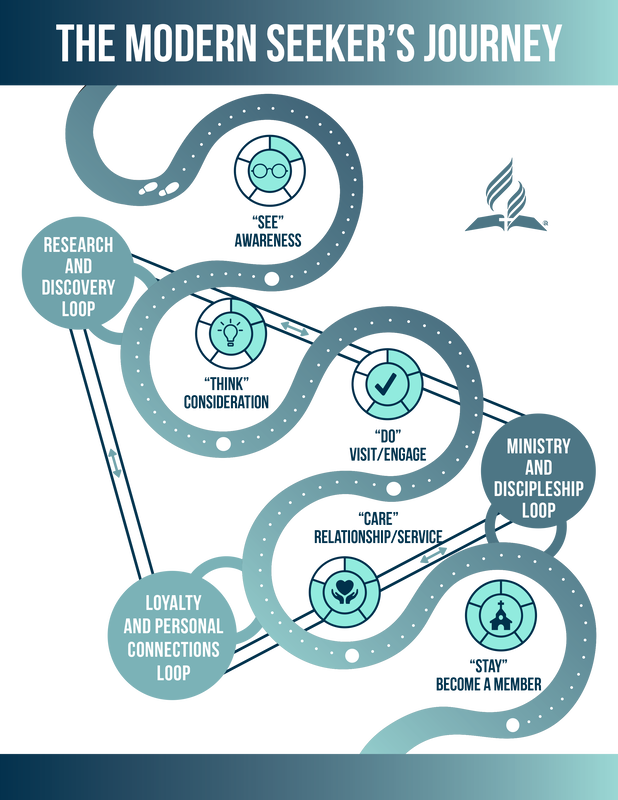
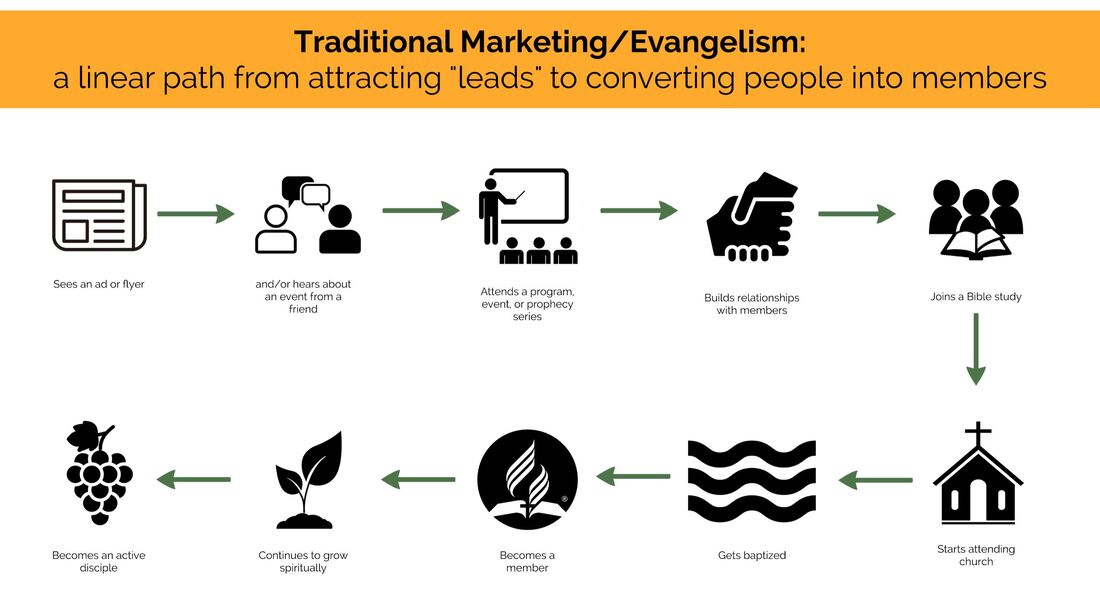
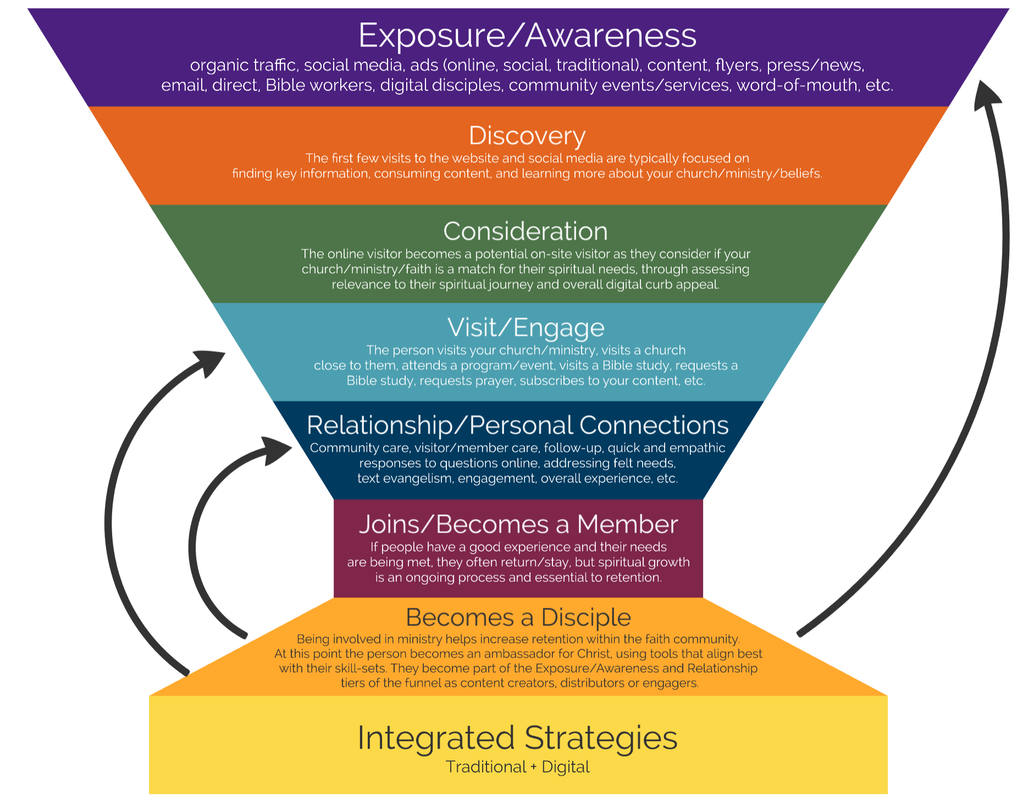
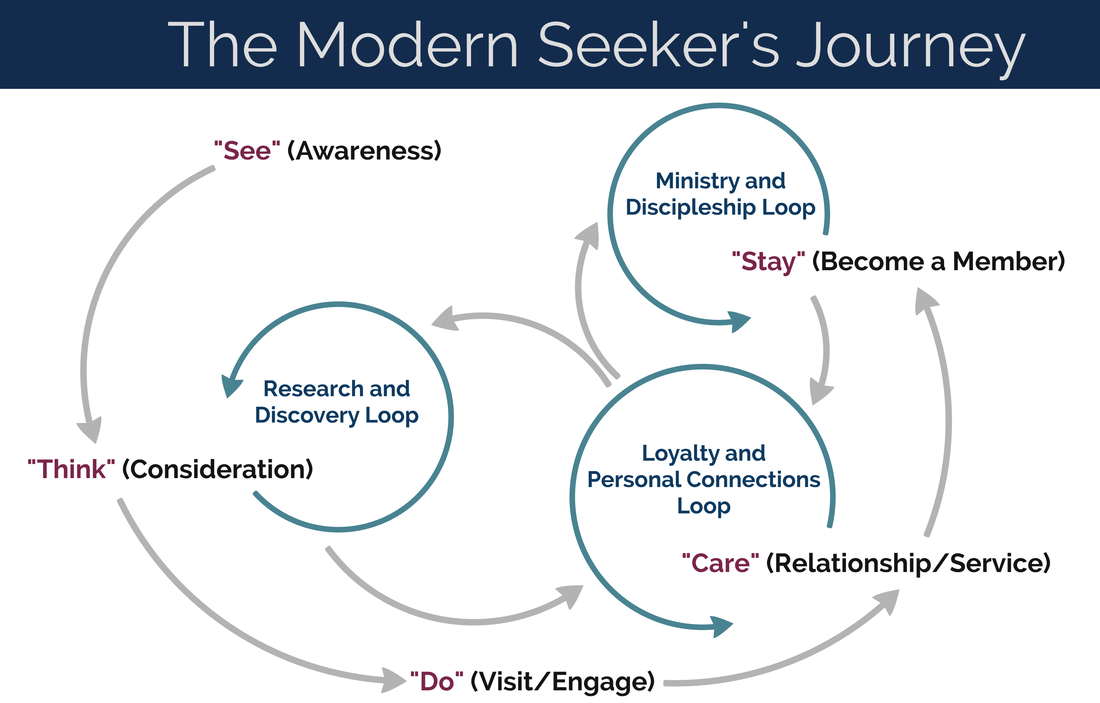
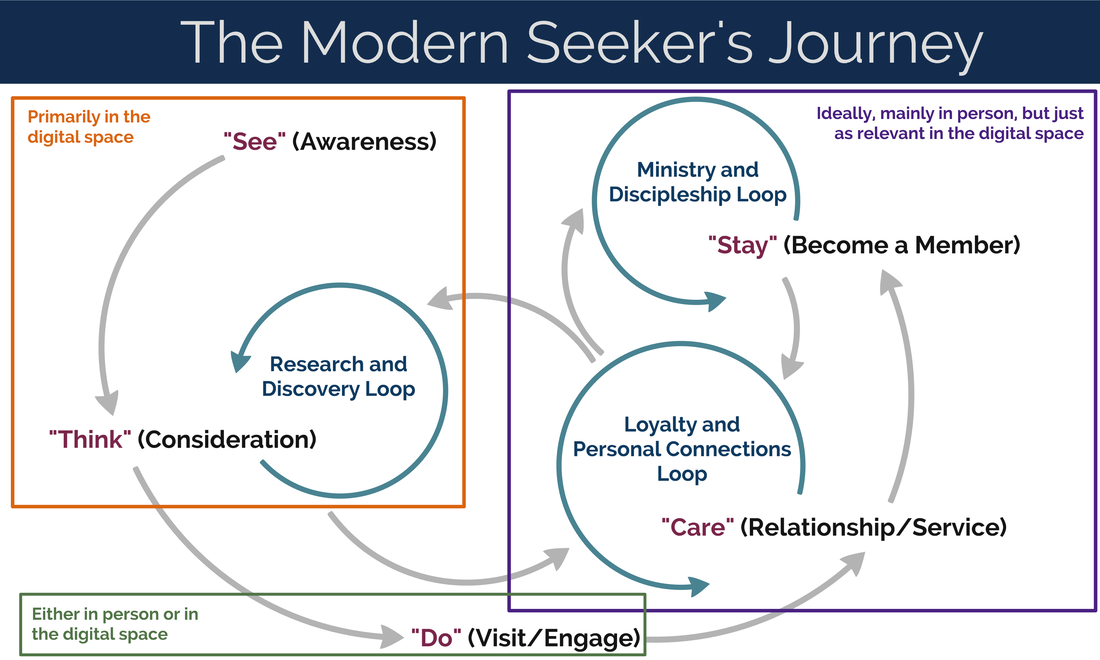

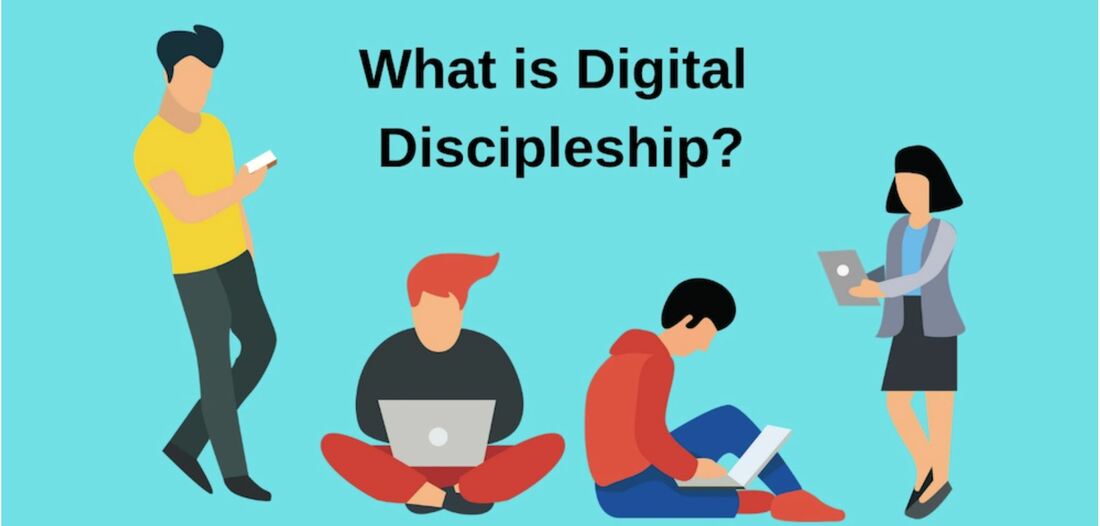
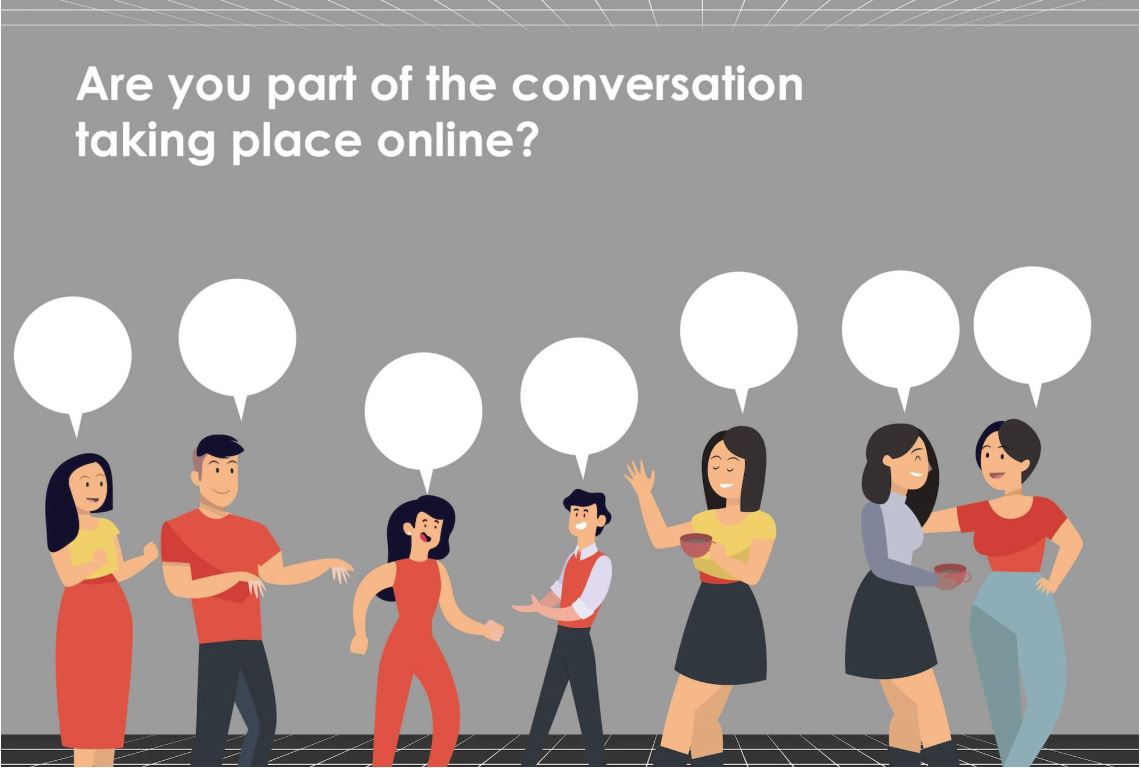
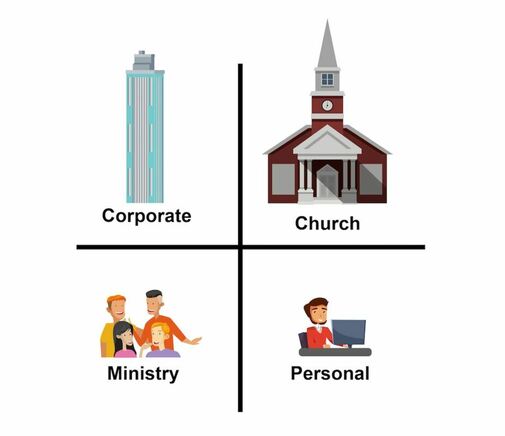


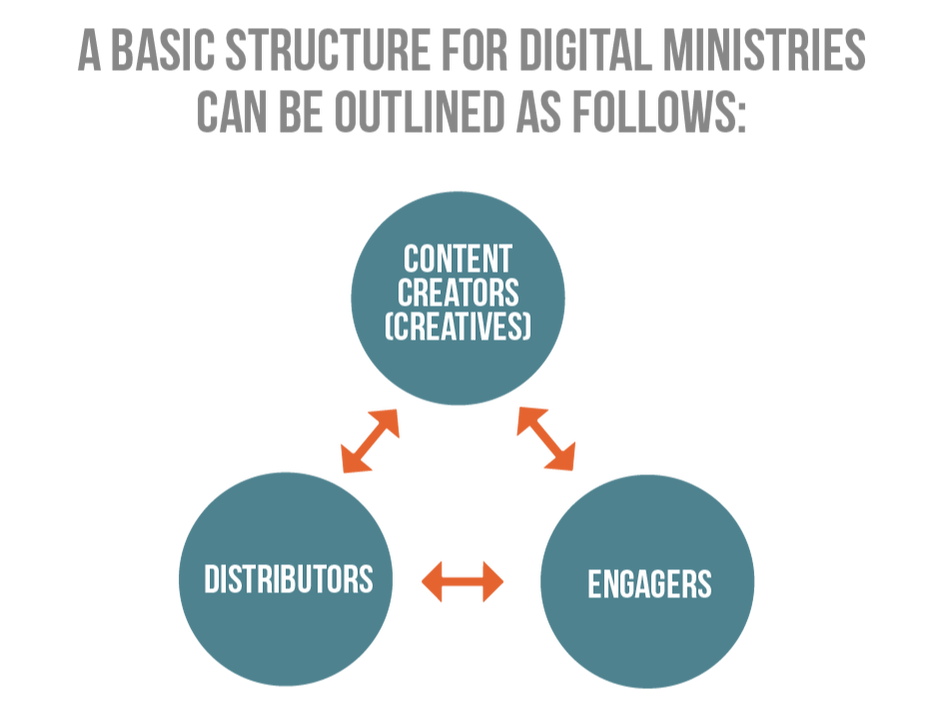
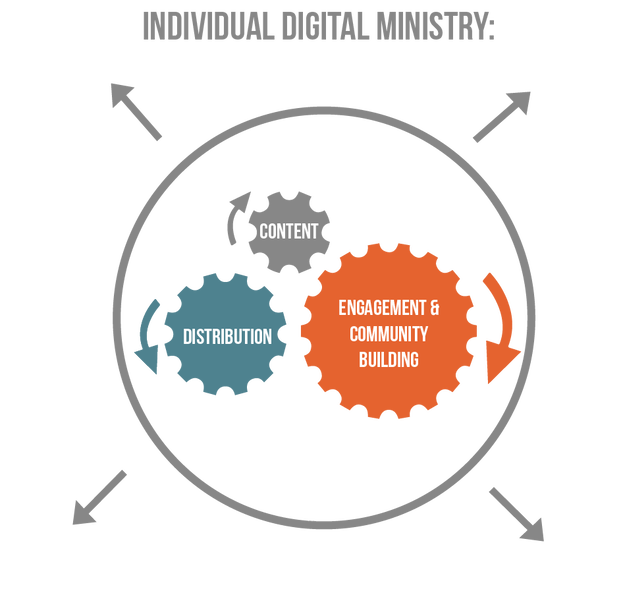
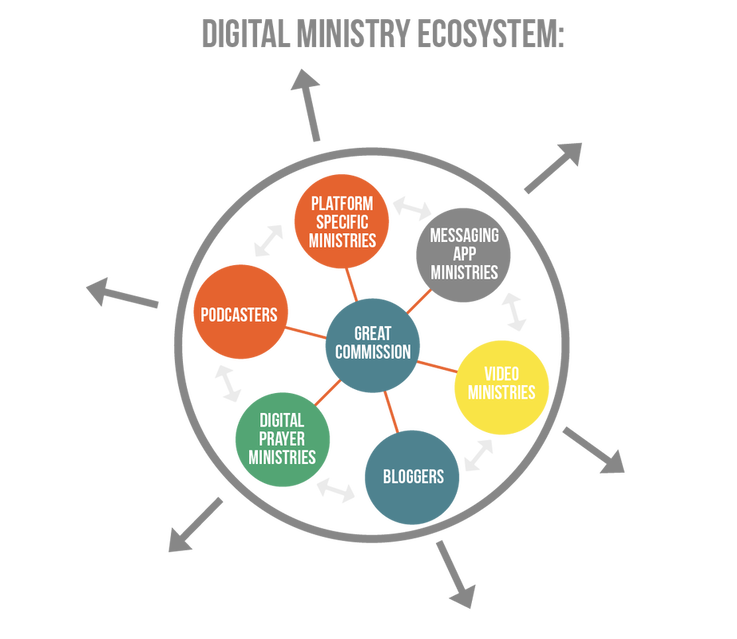
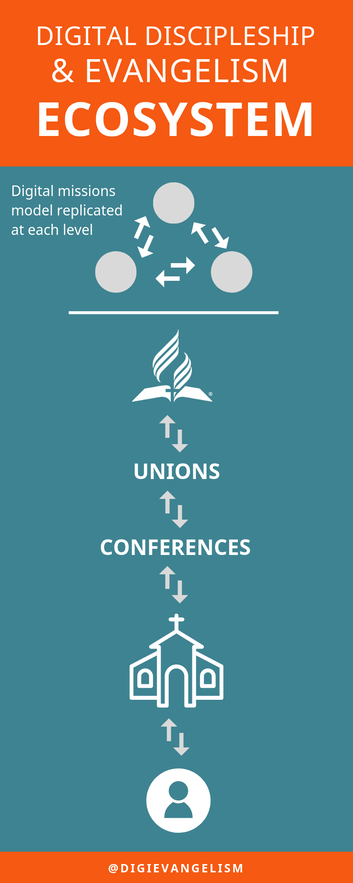




 RSS Feed
RSS Feed